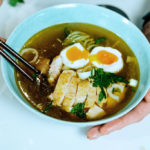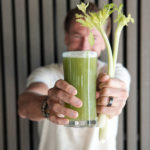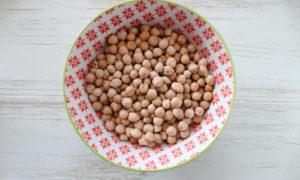Estimated reading time: 3 minute(s)
Edible seaweed has been a around for a while, but for many it remains a mystery: “why it is so trendy”? , “Where can I find them”? “How can I add them to my dish”?
These are some of the questions that many of my friends ask me that make them have reservations about this food and prevent them from including them in their daily diets.
Many people have only eaten seaweed when they go out to eat at restaurants that take advantage of these exotic foods. However, the growing interest in novel and healthy foods has opened a window for these Algae’s into our culture. Learn why these foods are all the rage, their different styles, and how you can start including them in your diet – beyond just sushi.
The Benefits of Edible Seaweed
I love using these kinds of foods in my dishes to help break up the monotony of cooking, and diversify the flavors, textures and colors of my dishes. But, the benefits of these foods go way beyond their culinary qualities.
There are different types of ‘sea vegetables’, but they all have common nutritional characteristics:
- Low energy content, so they can be included with vegetables.
- Provides an array of fats such as omega-3, which is associated with the prevention of cardiovascular diseases, although its fat content is generally low.
- Low in carbohydrates with a significant amount of fiber, a good option to improve intestinal function and control blood cholesterol levels.
- They provide essential amino acids, which is to say, amino acids that we cannot synthesize in our bodies, and that are made of organic compounds that shape proteins.
- Direct source of antioxidants, vitamins and minerals. Vitamins B1, B2, A and C are particular ones that stand out. It’s mineral composition is mixed with sea water, highlighting sodium, iodine, chlorine, potassium, phosphorus, magnesium, iron, among others.
Additionally, edible algae have the ability to absorb toxins on its surface, hence its ‘fame’ for detoxifying the body, in fact it’s recommended to eat them when your body possibly has an accumulation of metals, which often occurs with smokers. These are some of the most popular algae:
Wakame: they are one of the algae’s richest in protein, fiber and minerals such as iodine and calcium.
Spirulina: they provide a good supply of protein, including essential amino acids with good bioavailability, the main fat it provides is Omega-3, and it contains other vitamins and good amounts of antioxidants.
Chlorella: Is considered a detoxifying and purifying algae, since it helps to eliminate toxins that accumulate in the body.
Kombu: rich in protein, iron, fiber, and minerals like iodine; due to its content, it is recommended not to abuse it.
Nori: contains a large amount of vitamins and minerals (especially iodine), as well as fiber.
How to get them and how to use them
You’ve probably eaten more Algae than you think. Many products that we eat on a regular basis such as many “light” products, custard, cream caramel and sausages contain substances called hydrocolloids that come from algae, and are basically used to give the product other properties: gelling agents, thickeners and emulsifiers.
However, the growing fame of edible algae makes it easier for us to find them around us in the following ways:
Nori: Is probably the most popular, known primarily for being what sushi is wrapped in. It has a delicate sweet flavor, and you can get it in packages of thin dark green leaves, or in seaweed salads. You can use it chopped in salads, and for stews and soups.

Spirulina: Is usually found as a dietary supplement or powder, so it is widely used in smoothies, soups, and sauces, although you can also use it in other things like guacamole. It has a strong flavor, so we recommend just using a small amount.

Chlorella: also found as a powder or in tablet form, is used the same way as Spirulina.

Agar: Is used as a thickener or gelling agent, so it is widely used in baking or to make sauces. It is increasingly used by vegans and vegetarians as it is a friendly option,for making vegan cheeses. You can get it as a powder, flakes or strips.

Wakame: sold whole, in pieces or dehydrated; It is important to cut it before wetting it as it greatly increases its size. It’s used in salads, broths, and quinoa or rice dishes; Try it in more traditional recipes such as risotto or paella and give your dishes a delicious twist.

Kombu: sold dehydrated or in strips, and is usually used to add to stews and soups.

Each Seaweed has a different use depending on its texture and flavor, just like with vegetables. However, as you get to know them better – and with a little imagination – you can start to include them more often in your diet and thus take advantage of all their benefits.
What to consider when eating Edible Seaweed
You find some of these edible seaweeds already processed in grocery stores, so reading the package labeling is essential in order to avoid hidden ingredients that can negatively affect our health such as refined sugars.
Being a marine based product ,and having the ability to absorb toxins, there is a risk of ingesting metals that may have been previously absorbed by the algae in the water, so it is important to verify where they are from and where they were cultivated, preferably from an organic source or by bio cultivation. Don’t panic though, it’s about choosing quality food; the same as when you buy fish, fruits and / or vegetables, where you look for suppliers that follow appropriate farming and cultivation practices in order to control the content of heavy metals and pesticides.
Finally, it is important to understand that all excess is bad, and the consumption of these ‘sea vegetables’ is NO exception. Consuming these kinds of foods excessively can affect thyroid function (a change known as goiter) due to its high levels of iodine. Although this change is not common in Japan, where the consumption of algae is important. The Scientific Committee of the Spanish Agency for Food Safety and Nutrition (AESAN) recommends that in Spain we consume Algae moderately.
Globalization has allowed us to get to know other cultures and even bring them into our homes through exotic ingredients like edible seaweeds. Moreover, it has allowed us to bring good health foods into our kitchens, which help us to improve our lifestyle. In addition to providing us nutrients and bioactive ingredients, edible algaes have wonderful culinary properties, which make, including them into your diet just another way to expand the path that leads you to living a better, healthier life.


#BeMoreNatural #SoloTieneCosasBuenas











